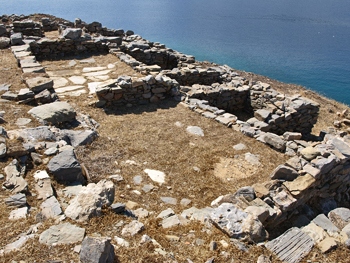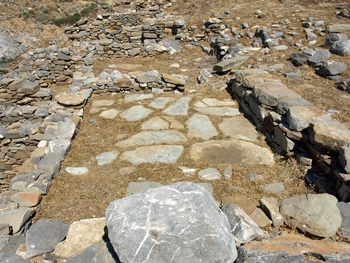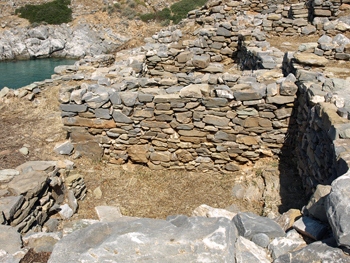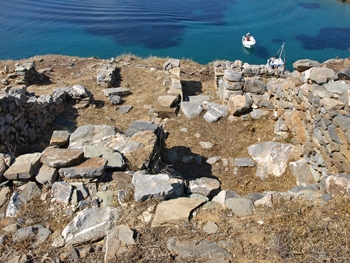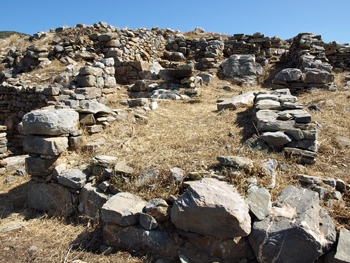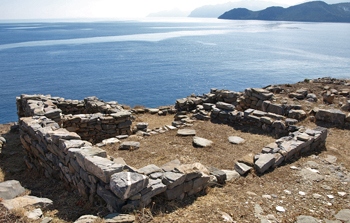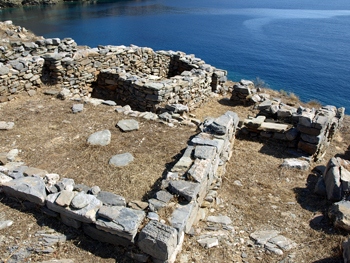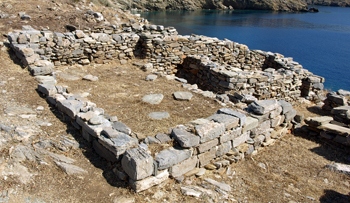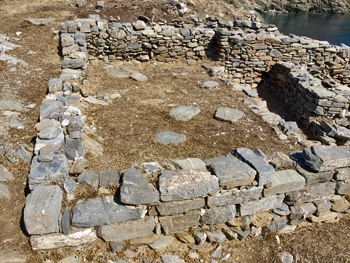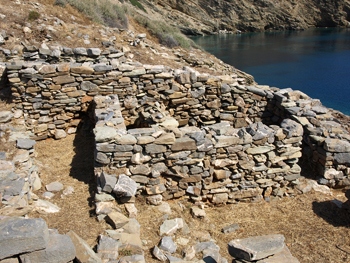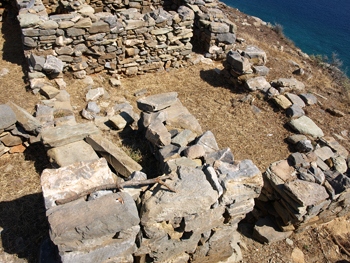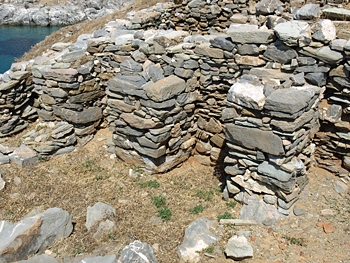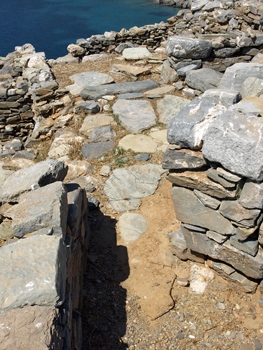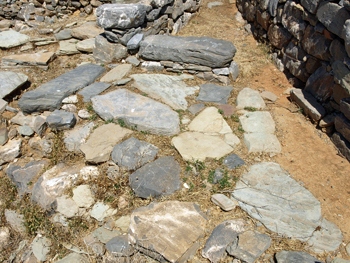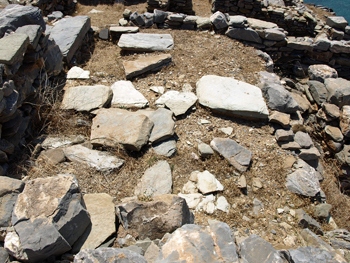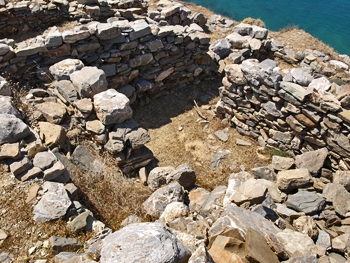House AB (Seager's House B)
Click here for house planIt was Seager who gave this structure the name House B. Now that it is in the part of the site designated as Area A, it is called house AB. It is to be found to the right at the top of the Grand Staircase, just beyond another structure which has been given the name House AA.
House AB is built on the slope which overlooks the old Minoan harbour area. Consequently the rooms on the higher terraces overlooked the rooms on the lower terraces. The thick walls are built of limestone blocks and the entrance via a lane into Room AB2 is on the lower level. Beyond Room AB2 was the basement room AB14 and AB15. The top two rooms, AB7 and AB9, were the largest rooms in the house and these would have been reached by the staircase AB6 and AB5, which also gave access to the basement room AB4. The largest room, AB9, was paved with stone slabs.
The rooms on the terrace immediately below rooms AB7 and AB9, that is to say Rooms AB16, AB10, AB11 and AB12, were all basement rooms. They could have been accessed either by stairs or a ladder from the upper terrace while rooms AB16 and AB12, which both have entrances, could have been accessed from the second floor of the lower rooms, AB14, AB18 and AB13.
It is not known when the house was built but it seems to have been destroyed at the same time as the rest of the site in LM IB.
Building AC (The Shrine)
Click here for house planBuilding AC, which was originally excavated by Seager at the very beginning of the 20th century and re-examined in 1986 by Betancourt and Davaras, is to be found on the east side of the main road, now known as Ridge Road, which runs north to south along the centre of the peninsula.
The building is considered to have had a special funntion for the Minoans living in the town. Not only does it differ architecturally from other buildings but frescoes showing seated women were also found in the ruins. Although there were two phases to the construction of the building, the main structure was built at the end of LMIA. Not unexpectedly, the building was destroyed along with the rest of the town in LM IB.
The entrance to the building was at AC7, down a short lane leading off the Ridge Road (AC12). Archaeologists have had difficulty interpreting the area immediately after the entrance. They are unsure whether or not AC5 was a staircase. AC6 is also open to several interpretations. Seager believed it was a portico for room AC1, a paved room which was the largest in the shrine, while others have suggested that AC6, like AC5, may also have been a staircase.
There are two rooms on the lower terrace, AC4 and AC2. Room AC2 seems to have had a bench at the back. Unfortunately erosion has made it difficult to interpret the area AC10 and AC15, which are thought to have been outside areas rather than covered rooms.
There are striking similarities between this building and a MM II shrine at Malia. Both structures had an unusual arrangement for entry to the building, a single large room on the west side and an area for religious practices on the east side. Given all this and the fact that Building AC has a bench-like structure and fragments of frescoes were found on the site, this all lends support to the conclusion that the building was a shrine.
House AM
Click here for house planHouse AM, or The House of the Three Buttresses, as it is known, is also located on the steep slope to the West of the peninsula, not far south of House AB. It is thought to have been a two-storey building. The three buttresses from which the house takes its name are located on the south-west side of the building, supporting the longest of the massive walls of which the lower part of the house is constructed.
The entrance to the house is at the top along a short lane leading off the Ridge Road at AM1 and AM2 on the floor plan. The threshold is marked by the usual large stone. Room AM4 is paved throughout. The remaining rooms, all at a lower level, would have been basement rooms and the rooms above them no longer exist. Nevertheless the house is a very striking building to look at.

